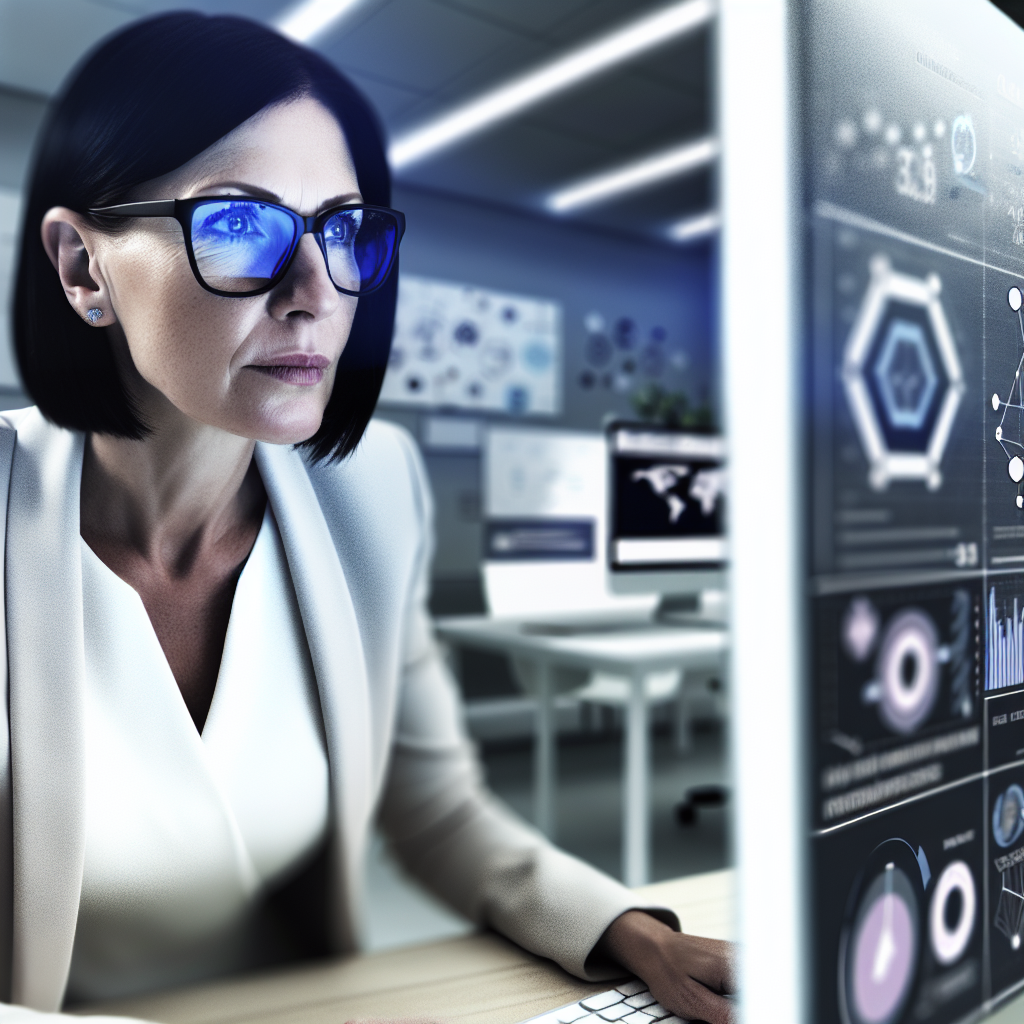Introduction
Overview of the Rise of Social Media Content Creation
Content creation AI-Powered video editing software tools and social media has transformed how we communicate and share information.
Platforms like Instagram, TikTok, and YouTube dominate our daily lives.
As a result, content creation has skyrocketed. Individuals and brands alike seek to engage audiences through creative visuals.
High-quality videos drive social media engagement significantly.
The demand for captivating content grows as user expectations rise. Content creators must adapt quickly to these evolving trends.
Introduction to AI-Powered Video Editing Software
AI-powered video editing software has emerged as a game changer.
These tools leverage machine learning to streamline the editing process.
They offer features like automated cutting, filtering, and audio adjustments.
Users can create professional-quality videos without extensive editing skills.
Popular software options include Adobe Premiere Pro’s AI tools and Magisto.
These programs save time and effort, allowing creators to focus on storytelling.
With AI, editing now becomes more accessible to everyone.
Importance of Discussing the Transformation Brought by AI
Understanding AI’s impact on video editing is crucial for content creators.
These innovations reshape how we produce and consume media.
AI simplifies complex tasks, reducing the learning curve for novice editors.
Creators can enhance their workflow, allowing for quicker project turnarounds.
Moreover, AI helps personalize content for targeted audiences.
Enhanced analytics allow creators to refine their strategies effectively.
Embracing AI-powered tools can elevate the quality of social media content significantly.
Therefore, discussing these transformations is essential for staying relevant in today’s digital landscape.
The Evolution of Video Editing Technology
Historical context of video editing software
Video editing has a rich history that reflects technological advancements.
The journey began in the early 20th century.
Early methods involved physical film splicing, where editors cut and taped together film strips.
This manual process required patience and precision.
As technology advanced, the introduction of video tape recorders revolutionized editing.
Editors began utilizing machines that allowed for direct manipulation of magnetic tape.
This shift enabled more flexibility and creativity during the editing process.
In the 1980s, non-linear editing systems (NLEs) emerged.
NLEs allowed editors to access any part of the footage without going through sequentially.
This innovation made it easier to experiment and rearrange scenes.
The arrival of personal computers further transformed video editing.
Software like Adobe Premiere and Avid Media Composer made editing accessible to a broader audience.
This democratization of video editing expanded creative possibilities for filmmakers and content creators.
Over the years, video editing software has continually evolved.
Users now have access to features like multi-track editing and real-time effects.
We Design & Develop Websites, Android & iOS Apps
Looking to transform your digital presence? We specialize in creating stunning websites and powerful mobile apps for Android and iOS. Let us bring your vision to life with innovative, tailored solutions!
Get Started TodayThe focus has shifted from simply arranging clips to creating immersive narratives.
The transition from manual editing to automated processes
The advent of digital editing marked a significant shift from manual techniques.
Early digital editors were primarily linear; users still faced limitations.
However, the rise of non-linear editing transformed the landscape.
As computers became more powerful, software began to incorporate automation.
Tasks like color correction and sound mixing became less time-consuming.
Editors could focus more on storytelling instead of technical adjustments.
Gradually, automated processes spread throughout the editing landscape.
Software integrated features like automatic scene detection and frame analysis.
These advancements saved creators significant editing time and effort.
The transition to automated editing tools sparked a new trend: template-based editing.
Many video editing programs offered pre-set templates for quick content creation.
This option appealed to social media users who valued efficiency and ease of use.
Automation led to a surge in video production.
More creators began producing content at a rapid pace.
The need for quick, polished videos became essential in the competitive social media space.
The role of AI in modern video editing
Artificial intelligence (AI) has become a game-changer in video editing.
AI algorithms analyze footage to deliver efficient editing solutions.
These solutions have dramatically transformed the video editing process for creators worldwide.
One significant role of AI is automating mundane tasks.
For instance, AI-powered software can transcribe dialogue and create subtitles automatically.
This feature saves time and improves accessibility for viewers.
AI also enhances video organization.
Advanced algorithms can categorize footage based on content and themes.
This capability allows editors to find relevant clips quickly without sifting through hours of footage.
Additional points
Additionally, AI-driven tools assist in creating engaging content.
For example, AI can suggest the best clips to highlight based on viewer engagement metrics.
This guidance enables creators to produce more captivating videos.
Many AI-powered systems now offer smart editing features.
They can recognize faces, objects, and even emotions within the video.
This technology helps editors create visually engaging sequences that resonate with audiences.
- AI tools for color grading: AI can suggest color palettes that enhance the mood of a video.
- Sound editing: AI improves audio quality and removes background noise automatically.
- Social media optimization: AI analyzes platform standards and tailors videos for optimal performance.
- Video summarization: AI can create concise highlights from longer videos, appealing to busy viewers.
The impact of AI on video editing extends beyond technical prowess.
It democratizes content creation by making sophisticated tools accessible.
Hobbyists and professionals alike can utilize AI to elevate their video production quality.
As these technologies continue to advance, the possibilities are limitless.
We Design & Develop Websites, Android & iOS Apps
Looking to transform your digital presence? We specialize in creating stunning websites and powerful mobile apps for Android and iOS. Let us bring your vision to life with innovative, tailored solutions!
Get Started TodayThe combination of AI and video editing empowers creators to experiment like never before.
Automated tools free up time, allowing a focus on creativity and storytelling.
AI integration in video editing software presents exciting opportunities for the future.
These innovations will likely inspire new editing techniques and genres.
The role of AI in video editing is still growing and evolving.
In summary, the evolution of video editing technology highlights significant milestones.
From manual splicing to sophisticated AI-driven software, each advancement shapes content creation.
As the landscape continues to evolve, creators can expect even more transformative changes, enhancing their storytelling abilities in social media.
Read: Cloud-Based Social Media Management Tools: The Next Frontier for Businesses
Features of AI-Powered Video Editing Software
AI-powered video editing software stands as a game changer in the realm of social media content creation.
With the rising demand for engaging video content, these tools deploy advanced technologies to simplify and enhance the editing process.
Users benefit from features that dramatically reduce editing time, while keeping quality high.
Below, we explore several standout features of such software:
Automated Editing Techniques
Automated editing techniques are at the forefront of AI video editing software.
These techniques allow creators to produce polished content with minimal manual effort.
Here are some key elements:
- Automatic Cutting: The software identifies key moments in footage. It does this by analyzing motion, sound, and facial expressions.
This feature allows for seamless transitions and helps to maintain viewer engagement. - Splicing and Merging: AI tools can automatically splice together different clips. This function improves workflow efficiency by quickly generating cohesive narratives from multiple video sources.
- Scene Detection: Many AI programs can detect and segment various scenes. This ability provides editors with options to focus on specific segments, promoting better storytelling.
- Background Removal: Automated features can help users erase or replace backgrounds easily. This is particularly useful for creators looking for creative settings without complex green screen setups.
These automated techniques save valuable time and allow content creators to focus on their messaging.
They streamline the editing process, making it accessible to users of all skill levels.
AI-Assisted Enhancements
AI-assisted enhancements further elevate the quality of edited videos.
These features optimize visuals and audio to meet contemporary standards.
Here’s how they work:
- Filters and Effects: AI tools offer a vast library of filters. These can be applied automatically based on the content type and mood.
Creators can enhance the overall aesthetic without needing extensive editing skills. - Color Correction: Advanced algorithms analyze footage and suggest color corrections. This automated process ensures that videos display vibrant and consistent colors, enhancing overall visual appeal.
- Stabilization: Handheld footage often needs stabilization. AI-powered software adjusts and stabilizes shaky clips, creating smoother visuals.
- Audio Enhancement: AI can isolate vocals and reduce background noise. This feature leads to clearer audio, which keeps viewers engaged.
These enhancements incorporate sophisticated technology that discreetly improves video quality.
Such features enable creators to produce professional-grade content without extensive editing experience.
Smart Recommendations Based on Trends and Audience Preferences
Smart recommendations empower creators by guiding content decisions.
AI algorithms analyze trends, preferences, and performance metrics to offer personalized suggestions.
Here are notable aspects of this feature:
- Trend Analysis: AI tools track trending topics across social media platforms. By integrating current trends, creators can boost engagement and relevance in their videos.
- Content Suggestions: Based on viewer behavior, these tools recommend themes or styles. Content creators can adapt their videos to resonate with specific audiences.
- Posting Times: AI analyzes audience engagement data to suggest optimal posting times. This helps maximize reach and interaction with videos.
- Performance Metrics: Post-editing, AI offers insights on video performance. Metrics help in understanding what works, allowing creators to refine future content.
Smart recommendations ensure creators make informed decisions.
This adaptability can significantly enhance audience connection and retention rates.
In summary, AI-powered video editing software revolutionizes how content creators approach social media.
Automated editing techniques save time and effort, while AI-assisted enhancements elevate video quality and aesthetics.
Furthermore, smart recommendations guide creators in aligning their content with audience interests and current trends.
As technology continues to evolve, these features will only become more sophisticated.
Creators wield greater power in producing engaging content that captivates and retains the ever-changing social media audience.
AI video editing software thus stands as an indispensable tool for modern creators striving for excellence in content production.
Read: Real-Time Data Integration: Revolutionizing Social Media Insights for Enterprises
We Design & Develop Websites, Android & iOS Apps
Looking to transform your digital presence? We specialize in creating stunning websites and powerful mobile apps for Android and iOS. Let us bring your vision to life with innovative, tailored solutions!
Get Started TodayImpact on Content Creation Efficiency
Time-saving benefits for content creators
AI-powered video editing software significantly reduces the time needed to produce high-quality videos.
Content creators can perform complex editing tasks in mere minutes.
Here are some notable time-saving benefits:
- Automated editing processes: Many tools automatically analyze footage and make cuts based on the content’s rhythm.
- Smart trimming: AI can identify the best takes and remove unwanted sections, streamlining the editing workflow.
- Instant color correction: Automatic color grading allows creators to achieve polished visuals without manual adjustments.
- Easy template application: Using pre-made templates, creators can consistently apply styles across multiple videos quickly.
- Automated captioning: AI quickly generates captions, making videos more accessible without extra effort.
These benefits lead to faster project completion.
Consequently, creators can focus more on content ideas than tedious editing tasks.
Efficient workflows become a reality when leveraging these AI tools.
Less time spent on editing translates into more time for audience engagement and growth.
Reduction of technical skill barriers
AI video editing tools lower technical barriers for aspiring creators.
Many individuals with little to no editing experience can now produce professional-quality videos.
This democratization of video creation has profound implications:
- User-friendly interfaces: Many AI editing tools feature intuitive layouts, making navigation easy for beginners.
- Guided editing features: AI offers step-by-step assistance, directing users through various editing tasks.
- Smart suggestions: The software provides recommendations for improving content quality based on user preferences.
- Automatic formatting: AI can reformat video dimensions for different social media platforms, ensuring optimal presentation.
- Learning resources: Many platforms offer tutorials and resources tailored to beginners, enhancing learning opportunities.
This reduction in skill barriers empowers diverse voices in social media content creation.
More creators can share their unique perspectives without needing extensive technical expertise.
This shift encourages innovation and leads to a more vibrant content landscape.
Enhanced productivity and output of content
AI-powered editing software boosts productivity and increases the volume of content creators can produce.
By automating key tasks, the software allows creators to generate more engaging content quickly.
Here are some ways productivity improves with these tools:
- Multi-video support: Many AI tools enable users to work on several projects simultaneously, enhancing content output.
- Batch processing: Creators can edit multiple videos at once, saving time through automated processes.
- Efficient collaboration: AI features facilitate teamwork among creators, enabling seamless sharing and feedback.
- Performance analytics: Tools often provide insights on viewer engagement, guiding content strategies with data.
- Streamlined revision processes: Rapid iterations on feedback lead to faster final products.
As a result, creators can maintain consistency and regular posting schedules.
Increased output meets audience demand and strengthens brand presence on social media platforms.
This enhanced productivity allows creators to adapt to rapidly changing trends.
Furthermore, regular content updates keep audiences engaged and foster community interactions.
Consistent content flow builds loyalty and trust, essential for long-term success in the digital space.
Enhanced productivity through AI-powered editing equips creators to thrive in an increasingly competitive environment.
In essence, AI-powered video editing software is a transformative force in content creation efficiency.
The time-saving benefits, reduction of technical skill barriers, and enhanced productivity lead to dynamic content creation landscapes.
More creators emerge, sharing diverse stories and ideas, enriching social media platforms.
As these technologies continue to evolve, we can expect even greater innovation and creativity in video content
Read: Harnessing Natural Language Processing for Social Media Sentiment Analysis
Enhancing Creative Opportunities
Access to Advanced Tools for Amateur Creators
AI-powered video editing software has democratized content creation.
Now, even amateur creators can access advanced tools.
These tools eliminate the need for extensive training.
Many freelance artists feel empowered as technology advances.
They create professional-quality videos with limited resources.
AI editing software simplifies complex processes such as:
Automated scene detection
Intelligent audio syncing
We Design & Develop Websites, Android & iOS Apps
Looking to transform your digital presence? We specialize in creating stunning websites and powerful mobile apps for Android and iOS. Let us bring your vision to life with innovative, tailored solutions!
Get Started TodayReal-time color correction
Professional motion graphics
Efficient footage organization
These features speed up editing workflows.
As a result, creators can focus more on creativity rather than technical details.
The software learns users’ styles and offers tailored suggestions.
This personalization aids users in perfecting their craft.
Furthermore, creators gain access to pre-built templates.
These templates cater to various genres, including:
Vlogs
Short films
Promotional videos
Social media posts
With just a few clicks, users can implement sophisticated effects.
This capability transforms ordinary content into captivating narratives effortlessly.
Collaboration Possibilities Through AI Integrations
Collaboration has become a crucial aspect of creative projects.
AI-powered video editing software encourages teamwork across distances.
Cloud-based platforms facilitate real-time collaboration.
Teams can work simultaneously, regardless of location.
These collaborative tools shrink geographical boundaries.
Content creators can synergize their unique skills efficiently.
AI enhances the collaborative process through features like:
Shared libraries for assets
Comment and annotation options on videos
Automated version control for edits
Integrated feedback loops
Task assignment and deadline tracking
Through AI, users can streamline their feedback processes significantly.
Instant notifications alert users about updates and changes.
This acceleration fosters creativity and keeps projects on track.
Moreover, AI can identify complementary skills among team members.
The software suggests potential collaborators based on past projects.
This intelligent matchmaking enhances overall project quality through skill diversity.
Creative teams can achieve remarkable results through collaboration.
AI facilitates seamless exchanges of ideas and assets, enriching the final product.
We Design & Develop Websites, Android & iOS Apps
Looking to transform your digital presence? We specialize in creating stunning websites and powerful mobile apps for Android and iOS. Let us bring your vision to life with innovative, tailored solutions!
Get Started TodayThe synergy brought by AI-powered tools drives innovation and creativity.
Expansion of Storytelling Techniques and Styles
Storytelling remains at the heart of content creation.
AI-powered software opens avenues for innovative narratives.
These tools assist creators in exploring varied storytelling techniques.
AI analyzes countless examples of successful storytelling.
It identifies trends that help creators design captivating narratives.
Some storytelling styles enhanced by AI include:
Non-linear storytelling
Interactive narratives
Multicultural perspectives
Real-time audience engagement strategies
Dynamic pacing adjustments based on viewer reactions
As creators experiment with these styles, their stories become richer.
The diverse techniques broaden the scope of creativity and impact.
For example, interactive narratives engage viewers like never before.
This interactivity compels audiences to participate actively in the story unfolding.
Furthermore, AI tools can recommend innovative angles and themes.
As a result, creators can design unique storytelling approaches.
This expansion fosters creativity and challenges conventional narratives.
In addition, AI aids creators in analyzing viewer feedback.
Understanding audience responses influences future projects.
Creators can adapt their techniques to deliver even more impactful content.
AI-powered software doesn’t limit creativity; it enhances it.
The interactive and data-driven nature empowers creators.
As a result, their ability to tell stories expands exponentially.
Furthermore, as creators embrace new storytelling techniques, audiences become more engaged.
This heightened engagement leads to increased loyalty and viewership.
Creators can cultivate strong communities around their content.
In short, AI-powered video editing software transforms the landscape of social media content creation.
The technology democratizes access to advanced tools, fosters collaborative opportunities, and expands storytelling techniques.
As a result, creators, both amateur and professional, can thrive.
This thriving cultivates a vibrant social media ecosystem where creativity knows no bounds.
Read: AI Chatbots in Social Media Customer Service: What Businesses Need to Know

The Role of AI in Audience Engagement
Personalization of Video Content Through AI Analysis
AI plays a crucial role in personalizing video content for diverse audiences.
By analyzing viewer behavior, preferences, and engagement metrics, AI systems tailor videos to fit individual tastes.
We Design & Develop Websites, Android & iOS Apps
Looking to transform your digital presence? We specialize in creating stunning websites and powerful mobile apps for Android and iOS. Let us bring your vision to life with innovative, tailored solutions!
Get Started TodayThis personalization enhances viewer satisfaction and boosts engagement rates significantly.
Here are some ways AI contributes to personalization:
- Content Recommendations: AI algorithms suggest videos based on past viewing history.
- User Behavioral Analysis: AI examines how users interact with videos, identifying patterns in their preferences.
- Demographic Targeting: AI segments audiences based on age, location, and interests for targeted content delivery.
- Enhanced Thumbnails and Titles: AI optimizes video titles and thumbnails to attract specific audience demographics.
For instance, platforms like YouTube utilize AI to recommend relevant videos tailored to each user.
By keeping viewers engaged, these recommendations foster a deeper connection between creators and their audience.
Optimizing Video Performance Based on Viewer Data
AI significantly optimizes video performance by utilizing viewer data to fine-tune content strategies.
Analyzing real-time data allows creators to understand their audience better, allowing for informed decision-making.
AI tools can provide insights into various performance indicators, including watch time, audience retention, and overall engagement.
Key optimization tactics powered by AI include:
- Performance Metrics Analysis: AI monitors key performance indicators to identify successful content features.
- Feedback Loop Creation: AI systems analyze viewer feedback to improve future video content.
- Content A/B Testing: AI runs experiments to determine the most effective video formats and styles.
- Scheduling Optimization: AI suggests optimal posting times based on when the audience is most active.
For example, a social media marketer might utilize AI tools that monitor engagement stats.
This enables them to adjust future content based on what resonates best with their audience.
Consequently, creators see increased viewer interaction and improved content performance over time.
Case Studies Showcasing Successful AI-Powered Campaigns
Numerous brands have experienced remarkable success through the strategic use of AI-powered video editing software.
Several case studies demonstrate how AI enhances audience engagement and maximizes content impact.
Here’s a look at some successful campaigns:
- Case Study: Unilever: Unilever leveraged AI to analyze consumer behavior across multiple demographics.
Their findings helped tailor customized video ads for different audience segments, leading to a 15% increase in overall engagement rates. - Case Study: Coca-Cola: Coca-Cola employed AI to personalize content for various social media platforms.
By tailoring videos to specific audience niches, they experienced a significant uptick in shares and comments. - Case Study: Nike: Nike implemented AI algorithms to curate video content that resonated with their core audience.
As a result, they achieved higher email open rates for their video campaigns, engaging viewers more effectively. - Case Study: Airbnb: Airbnb used AI-driven insights to create localized video content that speaks to individual communities.
This approach led to a notable increase in user-generated content and overall brand loyalty.
These case studies illustrate tangible benefits of AI in video marketing strategies.
By embracing content creation AI-Powered video editing software tools, brands can gain deeper insights into their audience, resulting in compelling and relevant video content.
In summary, AI has revolutionized audience engagement in the realm of video content creation.
The ability to personalize videos and optimize performance based on viewer data enables creators and brands to connect effectively with their audiences.
Successful case studies further validate AI’s role in transforming social media content, proving that data-driven strategies lead to measurable success.
Challenges and Considerations
As the wave of content creation AI-Powered video editing software sweeps across social media, it brings both remarkable advancements and notable challenges.
Content creators are excited about the accessibility and power of these tools.
However, they must also navigate some complex issues.
Potential for Loss of Creative Authenticity
AI has revolutionized video editing but poses risks to creative authenticity.
The tools can automate tasks that once required human ingenuity.
As a result, content can start to feel homogenized and less personal.
Some specific challenges include:
- Over-automated content: Relying too heavily on AI tools may result in videos that lack a unique voice.
- Standardized styles: Many creators may use similar editing features, leading to a dilution of individual styles.
- Loss of personal connection: Audiences often connect with creators’ personalities, which can fade if they’re not authentically presented.
- Challenges in storytelling: AI can optimize technical aspects, but it may not fully grasp emotional storytelling nuances.
Content creators must balance technology’s efficiency with their unique artistic flair.
They should find ways to incorporate their signature styles even while using AI.
This ensures that while they leverage advanced capabilities, they don’t sacrifice authenticity.
Ethical Concerns Surrounding AI Usage in Media
As AI becomes more integrated into video editing, ethical concerns increasingly arise.
These concerns mainly revolve around fairness, representation, and authenticity in media content.
Content creators need to remain vigilant about these issues.
Key ethical concerns include:
- Misrepresentation: AI might inadvertently perpetuate stereotypes or biases present in training data.
- Copyright issues: The use of AI-generated content raises questions regarding ownership and creative rights.
- Manipulation of reality: Deepfakes and altered videos can spread misinformation, damaging reputations and trust.
- Data privacy: AI tools often require user data, raising potential privacy violations if not handled responsibly.
Creators must prioritize ethical considerations when working with AI tools.
They have a responsibility to ensure fair representation and respect copyright.
We Design & Develop Websites, Android & iOS Apps
Looking to transform your digital presence? We specialize in creating stunning websites and powerful mobile apps for Android and iOS. Let us bring your vision to life with innovative, tailored solutions!
Get Started TodayEmphasizing transparency in how they employ AI can be a crucial step toward ethical content creation.
The Need for Education and Upskilling Content Creators
As technology evolves, education and upskilling become paramount for content creators.
Content creation AI-Powered video editing software can be sophisticated, and creators must understand its capabilities.
Fostering a culture of continuous learning is essential for thriving in a rapidly changing landscape.
Important aspects of education and upskilling include:
- Understanding AI limitations: Creators need to comprehend what AI can and cannot do, preventing over-reliance.
- Emphasizing critical thinking: Educators should instill analytical skills to dissect AI-generated outputs critically.
- Mastering new tools: Familiarizing themselves with a range of AI editing tools ensures creators leverage technology effectively.
- Building community knowledge: Creators can benefit from sharing tips and learning from others’ experiences in using AI.
Education can also enhance creativity.
As creators upskill, they can blend traditional techniques with AI innovations.
This fusion can lead to exciting new content forms and storytelling methods.
With the right knowledge, creators can use AI to augment their artistic voice rather than replace it.
Generally, while content creation AI-Powered video editing software presents incredible opportunities, it also brings challenges.
The potential loss of creative authenticity can hinder individuals seeking to build genuine connections with audiences.
Additionally, ethical concerns necessitate responsible practices when using AI in media. It’s crucial for creators to pursue continual education.
By understanding technology, creators will empower themselves and preserve their artistic integrity in the evolving digital landscape.
Future Trends in AI Video Editing
Predictions for Technological Advancements
As artificial intelligence continues to evolve, advancements in video editing technology will follow suit.
These advancements promise to enhance both user experience and output quality.
- Improved Automation: Video editing software will increasingly automate complex tasks, allowing users to focus on creativity.
- Enhanced Machine Learning: Expect algorithms to learn from user preferences, customizing workflows to suit individual styles.
- Greater Accessibility: Future AI tools will lower the barriers for novice editors, making high-quality editing accessible to everyone.
- Live Editing Features: As internet speeds improve, we will see real-time editing capabilities integrated into platforms.
- Seamless Collaboration: AI will pave the way for easier collaborative projects, allowing multiple users to edit the same video simultaneously.
- Smart Content Suggestions: AI will suggest content use, such as music or visuals, based on video context and target audience.
The Growing Importance of AI in Marketing Strategies
Marketers are discovering the immense potential of AI in shaping effective strategies.
Video content thrives in marketing, and using AI streamlines this process significantly.
- Targeted Content Creation: AI tools analyze consumer data to create content that resonates with specific demographics.
- Optimized Ad Placements: Predictive algorithms will pinpoint the best platforms and times for ads, maximizing engagement.
- Performance Analytics: AI will provide marketers with deeper analytical insights, guiding adjustments for ongoing campaigns.
- Personalization: AI-driven editing allows marketers to tailor video messages for individual viewers, enhancing user experiences.
- Cost Efficiency: Automated editing tools will reduce production costs, allowing companies to allocate budgets more effectively.
- Rapid Prototyping: Marketers can quickly generate multiple versions of a video to test different strategies.
Integration of Virtual and Augmented Reality in Content Creation
The rise of virtual reality (VR) and augmented reality (AR) is reshaping video content creation.
These technologies, when combined with AI, will redefine how users experience video.
- Immersive Experiences: AI will enhance VR environments, making them more interactive and engaging for users.
- AR Overlays: AI-powered video editing will easily integrate AR elements into live-action footage, enriching narratives.
- Real-time Interactivity: Enhanced software will allow users to interact with video content dynamically, making it more engaging.
- Personalized VR Content: AI algorithms will customize VR experiences based on individual user preferences and behaviors.
- Education and Training: AI-driven AR and VR will enhance educational videos, enabling interactive learning experiences.
- Event Promotion: AI can create promotional content that simulates real-world interactions, drawing audiences to events.
These future trends in AI video editing represent a significant shift in how creators will approach social media content.
The integration of advanced technologies will continue to streamline and elevate the creation process.
As AI tools advance, filmmakers and marketers will have unprecedented opportunities.
By embracing these trends, they can create engaging, transformative experiences for their audiences.
Conclusion
Recap of the transformative effects of AI in video editing
Content creation AI-Powered video editing software has revolutionized video editing in numerous ways.
It automates repetitive tasks, allowing creators to focus on storytelling.
By analyzing footage, algorithms pinpoint key moments, enhancing engagement.
Automated color correction and audio optimization improve overall video quality.
With features like scene detection, editors can quickly organize and trim content.
These advancements streamline workflows, making video production more efficient than ever.
Moreover, AI-generated captions and subtitles make content accessible to wider audiences.
Creators can now produce professional-looking videos without extensive technical expertise.
The significance of staying informed about evolving technologies
Staying updated with technology trends is essential for content creators.
AI in video editing will continue to evolve, introducing innovative features.
Understanding these advancements empowers creators to maximize their potential.
By leveraging AI tools, they can enhance creativity and maintain competitiveness.
We Design & Develop Websites, Android & iOS Apps
Looking to transform your digital presence? We specialize in creating stunning websites and powerful mobile apps for Android and iOS. Let us bring your vision to life with innovative, tailored solutions!
Get Started TodayEngaging with this technology allows creators to adapt their strategies.
Furthermore, being informed helps them identify tools that align with their vision.
Embracing change fosters growth and keeps content relevant.
Creators should actively seek knowledge about technological shifts in their field.
Encouragement for content creators to embrace AI tools while maintaining authenticity
Embracing AI tools requires a balance between efficiency and authenticity.
While these tools streamline processes, they should not overshadow genuine creativity.
Content creators must remain true to their unique voices and styles.
Authenticity resonates with audiences and builds lasting connections.
By integrating AI, creators can enhance their storytelling without losing their essence.
Experimenting with new tools fosters growth and idea exploration.
Incorporating AI allows for professional polish while ensuring that the creator’s personality shines through.
Ultimately, blending technology with authenticity leads to compelling content.
Before You Go…
Hey, thank you for reading this blog post to the end. I hope it was helpful. Let me tell you a little bit about Nicholas Idoko Technologies.
We help businesses and companies build an online presence by developing web, mobile, desktop, and blockchain applications.
We also help aspiring software developers and programmers learn the skills they need to have a successful career.
Take your first step to becoming a programming expert by joining our Learn To Code academy today!
Be sure to contact us if you need more information or have any questions! We are readily available.
Put Your Tech Company on the Map!
Get featured on Nicholas Idoko’s Blog for just $200. Showcase your business, boost credibility, and reach a growing audience eager for tech solutions.
Publish Now









